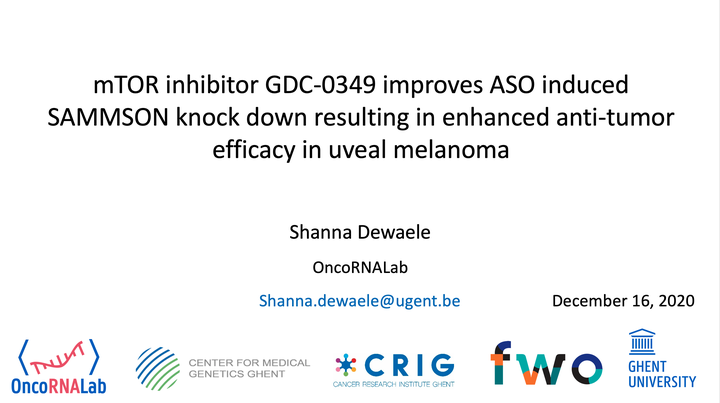mTOR inhibitor GDC-0349 improves ASO induced SAMMSON knock down resulting in enhanced anti-tumor efficacy in uveal melanoma

Abstract
Uveal melanoma (UM) is the most common intraocular malignancy in adults. The lack of an effective treatment results in a median survival time of less than one year for patients with metastatic disease and shows the high unmet need for the development of effective treatments. Recently, the melanoma-specific lncRNA SAMMSON was shown to be essential for skin melanoma survival. Analysis of a PAN cancer RNA-sequencing dataset revealed consistent expression of SAMMSON in uveal melanoma tumors. Targeting SAMMSON by means of antisense oligonucleotides (ASOs) results in a strong reduction in cell viability with induction of apoptosis of UM cells and slows down tumor growth in multiple UM PDX models. These effects were driven by impaired mitochondrial function and protein translation, resulting in cell death. To identify potential synergistic combinations, we combined SAMMSON knockdown with a library of 2911 FDA-approved drugs and quantified cell viability in a uveal melanoma cell line. The strongest synergy was obtained with the mTOR inhibitor GDC-0349. Combining SAMMSON knockdown with mTOR inhibition resulted in enhanced impairment of mitochondrial function and protein synthesis. Interestingly, we observed a more pronounced knockdown of SAMMSON when combining SAMMSON targeting ASOs with GDC-0349, suggesting mTOR inhibition facilitates ASO uptake in uveal melanoma cells. Further experiments are ongoing to confirm this mechanism. Taken together, these results demonstrate that SAMMSON inhibition in combination with mTOR inhibition could be a novel treatment option for uveal melanoma patients.